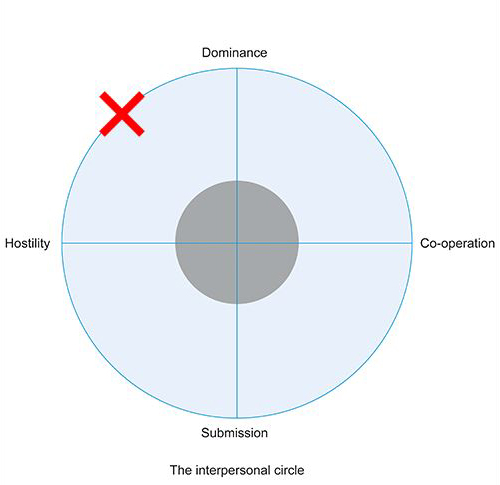3 Diagnosing behaviour using the interpersonal circle
The interpersonal circle – also known as the interpersonal circumplex or interpersonal wheel – is a psychological tool that helps explain why we experience the reactions explored in the previous activity. For example, why is it that, when you don’t want to talk and don’t feel like saying much, and then someone is very dominant with you, it makes you feel even more reluctant to talk?
In the 1950s, Tim Leary developed the idea of the interpersonal circle as a simple way of visually representing the interactions that take place between people. It’s therefore a well-established idea and has been used to look at the interactions between all sorts of people – doctors and their patients, police officers and suspects in interviews, and partners in romantic relationships. It has even been found to translate well to the interpersonal interactions of primates.
The following video introduces the principles of the model. Once you’ve watched it, you will move on to using the model to diagnose some behaviour.

Transcript: Video 2 The interpersonal circumplex (basic model) (adapted from Leary, 1955)
Now that you understand the basics of the model, you can have a go at ‘diagnosing’ behaviour by marking where you feel someone falls on the interpersonal circle.
Activity 3 Plotting where someone is on the model
First, take a look at the following interaction.

Transcript: Video 3 Interaction in a car park
Now consider the following questions.
1. Where is the person on the hostility–cooperation axis? Do you see them as being mainly hostile or mainly cooperative?
2. How intense is that behaviour? Remember that neutral behaviour goes towards the centre of the circle and more extreme or intense behaviour towards the outside of the circle (Wiggins, 1982).
3. Where is the person on the dominance–submission axis? Do you see them as being mainly dominant or mainly submissive?
4. How intense is that behaviour?
Using the following plotting tool, plot where you would position the person in the video on the interpersonal circle.

